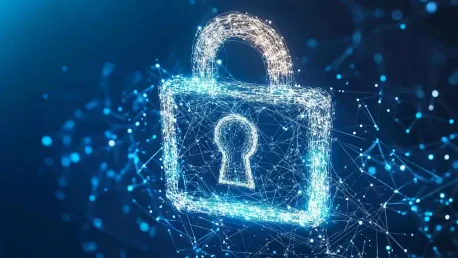As we approach the year 2025, the cybersecurity landscape is evolving at an unprecedented pace, presenting both exciting advancements and significant challenges to organizations and individuals alike. The rapid development and obsolescence of numerous trends underscore the imperative need for vigilance, adaptability, and proactive measures in crafting effective cybersecurity strategies. This article delves into the prominent advancements, emerging threats, and overarching trends that are defining the future of cybersecurity, framing a comprehensive understanding of the imminent challenges and progressions.
The ongoing integration of AI into cybersecurity procedures stands out as one of the most notable evolutions. Autonomous systems driven by AI, such as Security Orchestration, Automation, and Response (SOAR), are on the horizon, poised to revolutionize the way threats are detected and mitigated. These systems are designed to operate in real-time with minimal human intervention, allowing for faster and more precise responses to sophisticated cyber threats. However, despite the promise of AI, human expertise remains irreplaceable. Oversight, decision-making in complex scenarios, and the nuanced understanding of context are realms where human involvement is crucial. Thus, the future of cybersecurity will likely see an integrated approach where human and machine intelligence work hand in hand to thwart cyber-attacks effectively.
The Rise of AI-Driven Security Systems
One of the most exciting developments in cybersecurity is the rise of AI-driven Security Orchestration, Automation, and Response (SOAR) systems. These autonomous systems are set to revolutionize threat detection and response by operating in real-time without human intervention. By leveraging AI, defenders can gain an edge over increasingly sophisticated cyber threats. However, it is crucial to recognize that AI alone is not a panacea. Human expertise will remain essential for overseeing these systems and managing complex scenarios that require nuanced decision-making.
The integration of AI in cybersecurity is enabling faster, more accurate threat detection and significantly reducing incident response times. This new capability is instrumental in mitigating the financial and reputational damages often associated with cyber-attacks. In particular, AI-driven systems can analyze vast amounts of data in real-time, identifying patterns and anomalies far more efficiently than human analysts. Nevertheless, while AI can handle many tasks, it cannot replace the need for trained cybersecurity professionals who can interpret AI findings and adjust strategies accordingly. Thus, organizations investing in AI must also prioritize continuous training for their teams to ensure harmony between human intelligence and machine capabilities.
As threats become increasingly sophisticated, the necessity for a blended approach in cybersecurity – combining AI-driven automation with human oversight – becomes evident. Autonomous systems can rapidly adapt to new threats and respond in milliseconds, but they might not fully comprehend the broader context or subtleties of certain situations which human analysts can understand. Therefore, the most resilient cybersecurity networks will be those where AI and human expertise complement each other, creating a responsive and adaptive defense mechanism capable of addressing complex cyber threats with both efficiency and depth.
Threats to Critical National Infrastructure
A critical concern as we approach 2025 is the looming threat to critical national infrastructure. Technological advancements offer new defensive capabilities, but the digitization of essential services also increases vulnerability. It is anticipated that a successful cyber-attack on critical infrastructure by a nation-state actor could occur, potentially causing widespread disruption. This scenario underscores the urgent need for robust cybersecurity measures in critical infrastructure sectors.
Governments and organizations must prioritize the protection of critical infrastructure by fostering a strong security culture and promoting international cooperation. By implementing stringent security protocols and investing in advanced technologies, they can mitigate the risks associated with cyber-attacks. Additionally, regular security assessments and drills can help identify vulnerabilities and improve response strategies. In critical sectors like energy, healthcare, and transportation, such defensive efforts are particularly urgent, as cyber-attacks in these areas could have devastating ramifications for public safety and national security.
Beyond the immediate threat to infrastructure operations, cyber-attacks on critical national infrastructure could also have broader economic impacts. The disruption of essential services might lead to a cascade of consequences affecting citizens’ daily lives and the national economy. Therefore, ensuring the resilience of critical infrastructure involves not only technological defenses but also strategic policy decisions and international cooperation. Concerted efforts in sharing intelligence, developing standardized protocols, and conducting joint exercises with other nations can build a robust global defense posture, reducing the potential impact of such attacks and safeguarding essential services for the public.
Evolution of Disinformation Campaigns
The evolution of disinformation and misinformation campaigns is a growing trend in the cybersecurity landscape. The professionalization of criminal tools and services has led to the development of sophisticated deepfake tools and “disinformation-as-a-service” offerings in the cybercriminal underground. These advancements enable cybercriminals to launch highly convincing and damaging attacks, blurring the lines between cyber-attacks and information warfare. This hybridization of cyber-threats necessitates an evolved approach to countering disinformation, with an emphasis on detection technologies and response strategies.
To counter this emerging threat, organizations will need to invest significantly in detection technologies and employee training. Ensuring quick identification and response to disinformation is crucial in maintaining the integrity of information and protecting against reputational damage. By fostering a culture of vigilance and equipping employees with the necessary skills, organizations can better defend against disinformation campaigns. This strategic preparation involves deploying advanced AI-driven detection systems capable of identifying deepfakes and other false information, thus enabling quicker and more accurate responses to these evolving threats.
The increase in sophisticated misinformation campaigns also calls for a reassessment of communication strategies within organizations. Transparency and timely, accurate information dissemination are critical in maintaining trust and credibility, especially amid concerted disinformation efforts. Organizations must adopt proactive measures to mitigate the impact of misinformation, including establishing clear communication protocols and leveraging technology to counteract false narratives. Moreover, public awareness initiatives play an essential role, educating individuals about recognizing misinformation, thereby forming a first line of defense against these insidious campaigns.
Geopolitical Influences on Cybersecurity
Geopolitical influences play a significant role in shaping the cybersecurity landscape. State-sponsored cyber activities, hacktivism, and cyber espionage are likely to increase due to heightened geopolitical tensions. As a result, cybersecurity professionals must develop a broader understanding of international relations and collaborate closely with other departments to formulate comprehensive risk management strategies. Anticipating the geopolitical context of cyber threats can enhance organizations’ readiness and resilience, enabling more effective responses to these complex challenges.
Understanding the geopolitical context of cyber threats can help organizations anticipate potential attacks and prepare accordingly. By staying informed about global events and maintaining open lines of communication with government agencies and international partners, organizations can enhance their cybersecurity posture and respond more effectively to state-sponsored threats. International cooperation, intelligence sharing, and coordinated response efforts become essential in this landscape, ensuring a united front against adversaries seeking to exploit geopolitical tensions for cyber gains.
Moreover, geopolitical tensions can lead to an increase in cyber espionage activities, with nation-states targeting sensitive information and strategic assets of their rivals. This necessitates a robust and multi-faceted approach to cybersecurity, including advanced threat detection systems and comprehensive incident response plans. By adopting a holistic perspective that integrates geopolitical awareness with cutting-edge technology and collaboration, organizations can navigate the intricate and often perilous cybersecurity landscape shaped by international dynamics.
Adoption of Zero-Trust Mindset
A notable trend in cybersecurity is the adoption of a zero-trust mindset combined with a culture of cyber-mindfulness. Zero trust architecture assumes no user or system is inherently trusted, even within the network perimeter. This approach addresses human risk management by recognizing people as the weakest link in cybersecurity. Implementing a zero-trust architecture involves continuously verifying the identity and integrity of users and devices, regardless of their location, thus ensuring a higher level of security.
Implementing a zero-trust architecture involves continuously verifying the identity and integrity of users and devices, regardless of their location. This approach, alongside a culture where employees actively engage in security practices, will significantly enhance organizational security posture. By promoting cyber-mindfulness and encouraging employees to adopt secure behaviors, organizations can reduce the risk of human error and improve overall security. Real-time monitoring, stringent access controls, and a robust authentication framework are essential components of an effective zero-trust strategy, fostering a security-first environment.
Adopting zero-trust principles is not solely about technology but also about cultivating a security-conscious culture within the organization. Training employees to recognize potential threats and adopt secure practices is paramount. Encouraging a mindset of continuous vigilance and responsibility for security at all levels ensures that human factors, often the weakest link in cybersecurity, become a critical line of defense. By integrating zero-trust methodologies with comprehensive cyber hygiene practices, organizations can fortify their defenses against both external and internal threats, establishing a resilient security posture in an increasingly complex digital environment.
Advancements in Deepfake Detection Technology
Advancements in deepfake detection technology are another critical development anticipated by 2025. As deepfake technology becomes more sophisticated, so too will detection methods. Improved AI detection technology will reduce false positives for generated audio and video, becoming more accessible for consumers. This democratization of deepfake detection technology will be crucial in combating misinformation and protecting against sophisticated impersonation attacks. Organizations must stay abreast of the latest developments in deepfake detection and integrate these technologies into their security frameworks.
Organizations must stay abreast of the latest developments in deepfake detection and integrate these technologies into their security frameworks. By doing so, they can better protect their assets and maintain the trust of their stakeholders. Additionally, public awareness campaigns can help educate individuals about the risks associated with deepfakes and the importance of verifying the authenticity of digital content. Staying informed and proactive in adopting deepfake detection technologies will be essential in combating these evolving threats and maintaining the credibility and integrity of digital interactions.
The deployment of advanced deepfake detection technology goes hand-in-hand with the need for a comprehensive public education effort. Raising awareness about the existence and potential impact of deepfakes can empower individuals to scrutinize and question the authenticity of digital content. By doing so, they can mitigate the effects of misinformation and deception. Through collaborative efforts involving both advanced technology and educated public vigilance, society can effectively counter the rising tide of deepfake threats and maintain trust in digital communications.
Renewed Focus on the Human Element of Security
As we approach 2025, the cybersecurity landscape is evolving rapidly, offering exciting advancements and posing significant challenges for organizations and individuals. The swift progression and obsolescence of various trends highlight the critical need for vigilance, adaptability, and proactive cybersecurity strategies. This article explores key developments, emerging threats, and overarching trends shaping the future of cybersecurity, providing a comprehensive understanding of the imminent challenges and progressions.
Among the most noteworthy evolutions is the integration of AI into cybersecurity procedures. AI-driven autonomous systems, such as Security Orchestration, Automation, and Response (SOAR), are expected to transform how threats are detected and addressed. These systems can operate in real-time with minimal human intervention, delivering faster and more accurate responses to complex cyber threats. Nevertheless, human expertise remains vital. Oversight, decision-making in intricate scenarios, and contextual understanding are areas where human involvement is crucial. Thus, the future of cybersecurity is likely to feature an integrated approach, where human and machine intelligence collaborate to effectively combat cyber-attacks.









